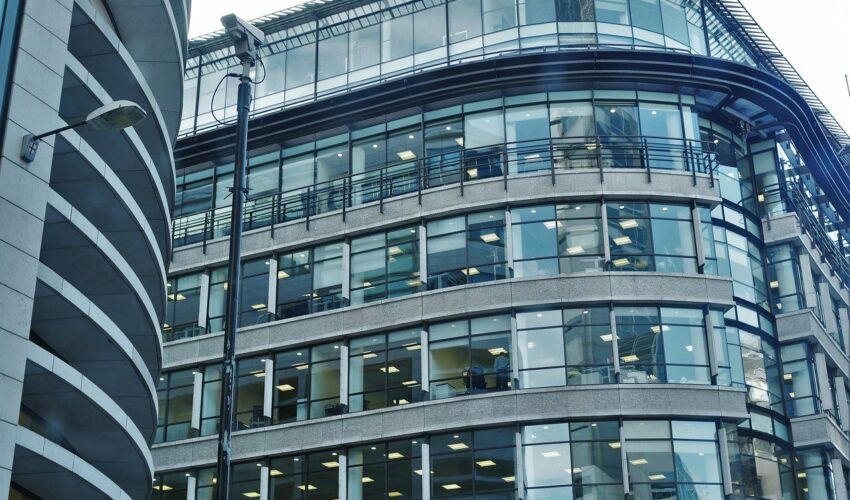If your tenant fails to pay the rent due under a commercial lease, there are several remedies at your disposal which are designed to rectify the breach and recover payment. The choice of action you take can be determined by individual circumstances, prevailing market conditions and any future plans you may have for the property. In this article, commercial tenant not paying rent UK, we take a look at the options open to you and the process and mechanism involved.
Free Initial Telephone Discussion
For a free initial discussion on how we can help you with the legal aspects of a non paying commercial tenant, get in touch with us today. We will review your situation and discuss the options open to you in a clear and approachable manner. Early expert legal assistance can help remove your tenant, where appropriate, and also avoid the stress of dealing with these issues on your own. Simply call us on 0345 901 0445 or complete our online enquiry form and a member of the team will get back to you.
Forfeiture
Forfeiture is the landlord’s ability to end a lease in the event that the tenant breaches a term of the lease or where another specified event takes place. There must be a valid forfeiture clause in the lease. This clause will specify when the landlord can forfeit the lease. If the lease does not include a specific forfeiture clause, the landlord will not be able to forfeit.
Where there is a valid forfeiture clause, the landlord will be able to forfeit the lease in accordance with that clause. This will usually be where the tenant is in breach of another clause of the lease (e.g. has failed to repair in accordance with the lease), if specified events occur (e.g. on the tenant’s insolvency), or on non-payment of rent or other charges under the lease.
The forfeiture clause within the lease will set out at what point the landlord can forfeit for non-payment of rent. This is typically where the rent has been outstanding for 14 or 21 days. A typical forfeiture clause allows a landlord to forfeit where the rent is overdue by 21 days. On the 22nd day, the landlord can forfeit the lease.
At this point, the landlord can either issue court proceedings, or ‘peaceably re-enter’ the property. This means to go in and change the locks. The choice is the landlord’s, and the best option will depend upon the circumstances of each case.
On the 22nd day, the landlord has the option to either forfeit the lease or not. He must decide whether to treat the lease as continuing, or that it has come to an end and that he will be forfeiting the lease.
By demanding or indeed accepting rent from the tenant, carrying out works to the property or even just talking to the tenant, a landlord could be said to be outwardly acknowledging that the lease continues. On the basis that the landlord is aware of the rent arrears, this will usually waive his right to forfeit. Landlords must, therefore, be careful of their actions at this stage to ensure they do not waive their right to forfeit.
However, the right to forfeit for non-payment of rent will arise again after the next rent becomes overdue. If rent is payable quarterly, a landlord may have a further three months to wait before he can forfeit the lease.
Remedies for forfeiture
Where the lease has been forfeit, but the tenant is able to remedy the breach by paying rent that is owed, he may be entitled to relief from forfeiture. The idea is to put the landlord and tenant back into the position they would have been in had forfeiture not taken place.
Where the landlord has issued forfeiture proceedings in the County Court, the tenant has a right to automatic relief from forfeiture if he pays all arrears, interest and costs into court not less than 5 clear days before the first hearing. On this payment, the landlord’s claim ceases, and the lease is reinstated as if it were never forfeit. If the tenant does not obtain relief in this way, he has various opportunities to apply for relief later. The final opportunity being up to 6 months after the landlord has recovered possession.
If the landlord has forfeited by peaceable re-entry, the tenant may apply to the County Court for relief from forfeiture within 6 months of the re-entry. The Court will consider the application and will make an order for relief if it sees fit. The Court will ensure that payment of the rent arrears is a condition of the granting of relief from forfeiture. It will typically also require the tenant to pay the landlord’s costs.
Forfeiture or relief from forfeiture proceedings can also be issued in the High Court, although this is rarer. The rules in the High Court are different to the County Court.
Draw down on rent deposit
If you secured a rent deposit from the tenant, you may be able to draw down this to cover the extent of any arrears owing. Not all rent deposits are the same, so you will need to review the terms of the Rent Deposit Deed to determine if there are any limitations in withdrawing from the tenant’s deposit first.
You should also consider the general solvency of the tenant and whether or not there are more appropriate methods of recovering the arrears. For example, if the tenant regularly fails to pay the rent then other courses of action may be more appropriate. However, if it is an isolated incident, then drawing down the rent deposit can be a quick way to recover any losses. If you decide to draw down the rent deposit then the Rent Deposit Deed will usually require the tenant to top-up the deposit back to a minimum amount within a certain number of days.
If you do decide to draw down the rent deposit then you will effectively waive any right to forfeit the lease.
Paying arrears in instalments
If you would like to maintain your relationship with the tenant, one option may be to consider accepting payment of the arrears by instalments. Should you choose this course of action you will need to ensure that you have a formal agreement in place. To do otherwise may lead to you not being able to terminate the lease if the instalment payments are not made as agreed.
Pursuing a guarantor or former tenant
If there is a guarantor under the lease then there will likely be a provision that obliges the guarantor to pay any sums due from the tenant in the event that they fail to pay. If the lease has been assigned then there may be a clause in the lease requiring a former tenant to guarantee the obligations of the current tenant, which includes settling any arrears.
Commercial Rent Arrears Recovery (CRAR)
CRAR is a unique method in recovering rent arrears relating specifically to commercial property. In this instance you would instruct an enforcement agent who would take control of a tenant’s goods and sell them on in order to recover the debt. The procedure is complex and various notices need to be served on the tenant throughout various stages of the process. Certain conditions also need to be satisfied before utilising CRAR. CRAR only applies to the recovery of arrears for principal rent. It cannot, therefore, be used to recover arrears in relation to service charges, insurance rent or other sums due under the lease.
If there is a subtenant in the property then you also have the right to pursue the subtenant to pay the tenant’s rent that is otherwise directly owed to you. As per pursuing the tenant, Notices will need to be served.
Statutory demand and insolvency
Where there is no dispute as to the amount of arrears you can look to serve a statutory demand on the tenant. If the tenant fails to settle those arrears within 21 days then this may be used as evidence of the tenant’s inability to settle those arrears, potentially giving grounds to present a bankruptcy or winding up petition. Please note that there are certain limitations to this and the level of debt will need to be assessed before this course of action can be embarked upon. Sometimes the mere threat of insolvency can be effective enough to produce the desired outcome but it is essential that there are no disputes as to the amount of debt as you could end up being liable for significant costs.
How we can help
We have a proven track-record of helping both landlords and tenants with commercial leases. We will guide you through all the necessary legal due diligence and the very latest legislation in a comprehensive and timely manner. We firmly believe that with the right solicitors by your side, the entire process will seem more manageable and far less daunting.
How to Contact our Commercial Property Solicitors
It is important for you to be well informed about the issues and obstacles you are facing. However, expert legal support is crucial in terms of saving you money and ensuring you achieve a positive outcome.
To speak to our Commercial Property solicitors today, simply call us on 0345 901 0445, or allow a member of the team to get back to you by filling in our online enquiry form . We are well known across the country and can assist wherever you are based. We also have offices based in Cheshire and London.
Disclaimer: This article provides general information only and does not constitute legal advice on any individual circumstances.




Leave a Reply
You must be logged in to post a comment.